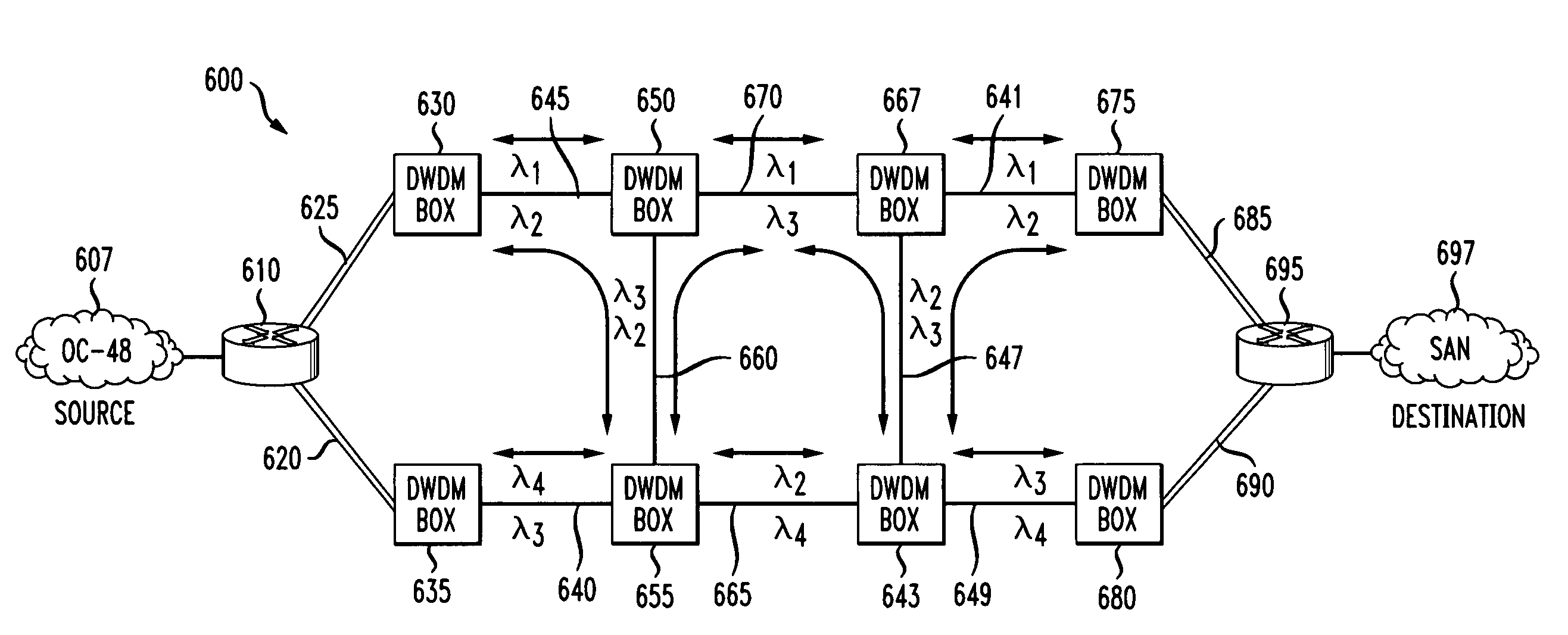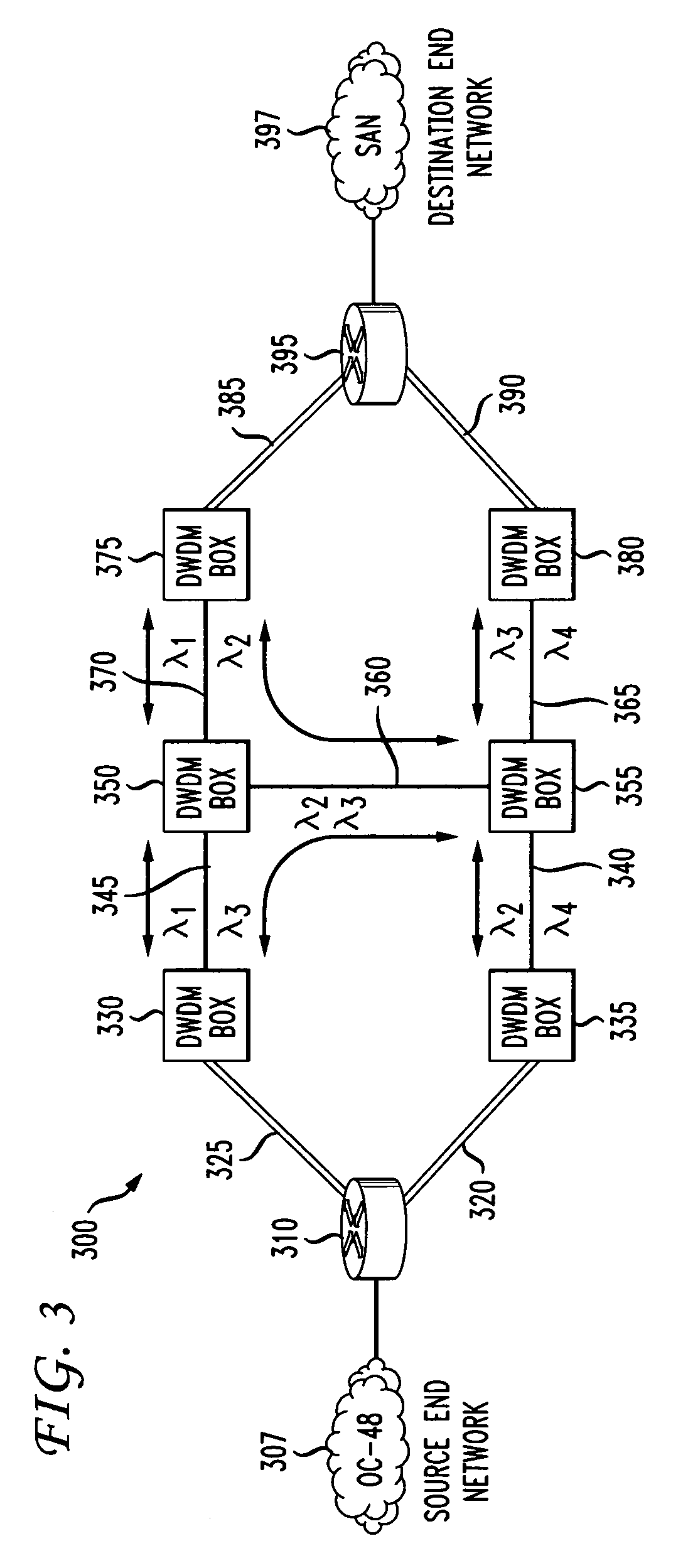Method and system for long haul optical transport for applications sensitive to data flow interruption
- Summary
- Abstract
- Description
- Claims
- Application Information
AI Technical Summary
Benefits of technology
Problems solved by technology
Method used
Image
Examples
Embodiment Construction
[0027]Shown in FIG. 3 is an optical network 300 functioning as a high speed transport of data from an optical source end network 307 (for example an OC-48) source to a destination end network 397 (for example a San) and using at least two (2) diversely routed DWDM (Dense Wavelength Division Multiplex(ed)(er)) circuits with end and intermediate DWDM equipment boxes 330, 335, 375, 380350, 355 spaced within the route mileage that corresponds to an expected level of network availability. These intermediate DWDM boxes 350, 355 are connected with optical fiber 360 transverse to the two (2) main optical spans (links 345, 370 and 340, 365). Switch 310 receives and transmits data from various source side network elements preferably in optical form. If necessary electrical data may be optically converted in switch 310. Also the switch may have other on board electrical signals. Switch 310 may take the form of a router, Ethernet switch, or SAN (Storage Area Network) switch or any other network...
PUM
 Login to View More
Login to View More Abstract
Description
Claims
Application Information
 Login to View More
Login to View More - Generate Ideas
- Intellectual Property
- Life Sciences
- Materials
- Tech Scout
- Unparalleled Data Quality
- Higher Quality Content
- 60% Fewer Hallucinations
Browse by: Latest US Patents, China's latest patents, Technical Efficacy Thesaurus, Application Domain, Technology Topic, Popular Technical Reports.
© 2025 PatSnap. All rights reserved.Legal|Privacy policy|Modern Slavery Act Transparency Statement|Sitemap|About US| Contact US: help@patsnap.com



